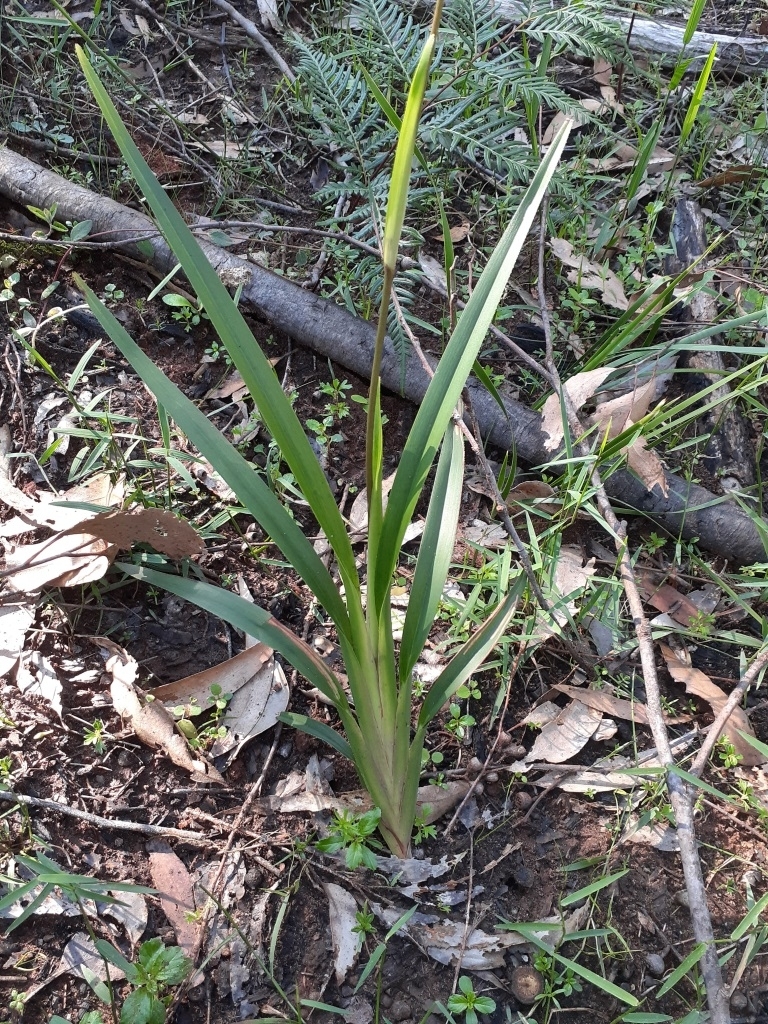Dianella caerulea
SimsPlants of small solitary clumps or more often rhizomatous, sometimes forming colonies several metres across, stems elongated with cauline leaves and or fascicles of leaves (extravaginal branching units) produced from near-naked stems, to c. 1.2 m high. Leaves usually ascending, prominently sheathing at base and equitant; sheaths usually pale with 12–20 or more more-or-less equally prominent nerves either side of the keel; lamina flat or margins somewhat recurved, 10–25 cm long,6–18 mm wide, concolorous or slightly paler beneath, usually glossy above, margins and midrib on lower surface irregularly serrate-scabrous. Inflorescence extending beyond foliage, usually rather few-flowered; flowers 15–20 mm wide, blue; perianth segments 7–12 mm long, sepals usually slightly longer than petals, both spreading to slightly recurved; stamens shorter than perianth segments, filament swellings (strumae) yellow, shorter than the yellow-brown anthers. Berry ovoid to globular, 7–12 mm long, blue; seeds c. 3.0–3.5 mm diam.
VVP, GipP, CVU, NIS, EGL, EGU, WPro, HSF, HNF, OtR, Strz, MonT, HFE, VAlp.
A species complex occurring from Qld to Tas, rare inland of the Dividing Range; at least 8 currently recognised varieties, 2 recognised in Victoria.
Conran, J.G. (1994). Liliaceae. In: Walsh, N.G.; Entwisle, T.J., Flora of Victoria Vol. 2, Ferns and Allied Plants, Conifers and Monocotyledons, pp. 637–686. Inkata Press, Melbourne.
 Spinning
Spinning

